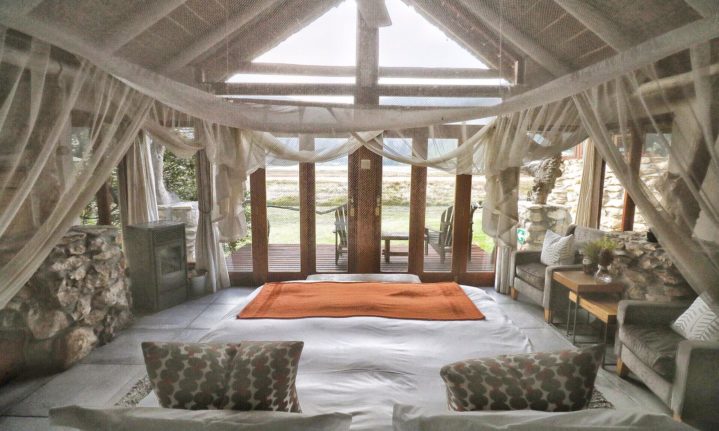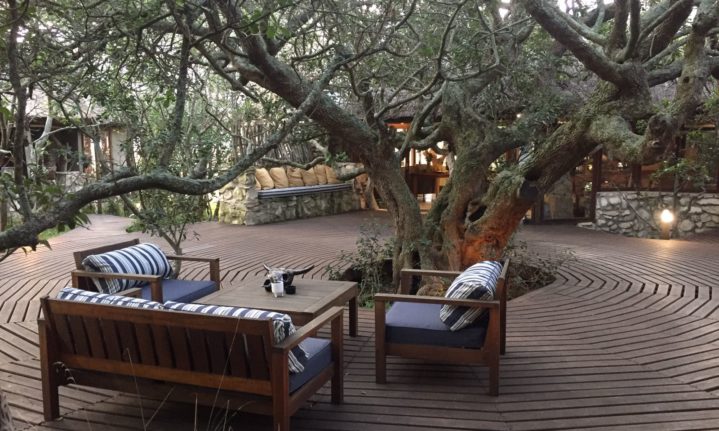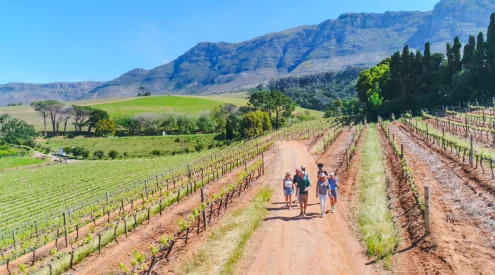Text and pictures by Peter Frost
Three in the morning and the wind comes up. Sheltered in one of Mosaic Lagoon Lodge’s four limestone cottages, it sounds like rain. It takes a minute to realise it’s the milkwoods against the thatch, 100-year-old trees announcing the change of the season, casting crooked shadows across the hot tub and Adirondack chairs on the patio outside as the winter zephyrs whisper. The forest spirits are awake, playing in the half-light of the moon.
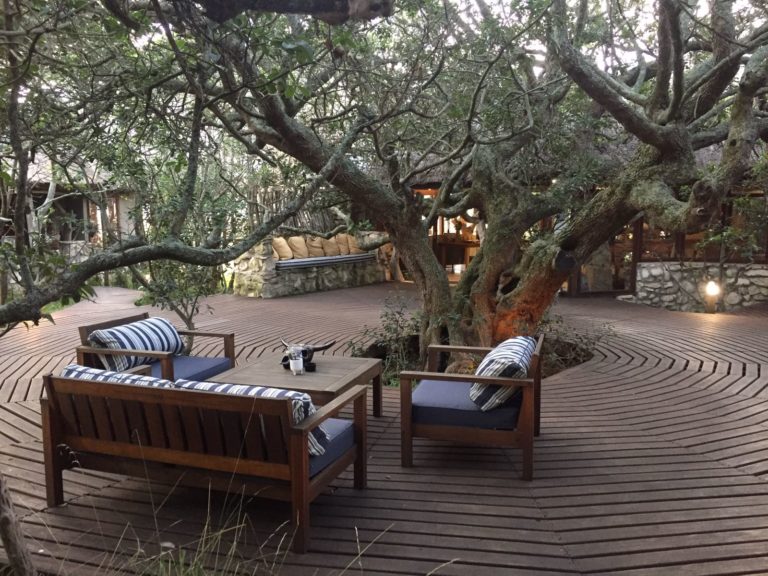
The next morning the wind has dropped, just the rustle of Cape robins in the undergrowth and argumentative mousebirds in the high branches to welcome the morning. It’s beautiful, cool, archaically peaceful. The milkwoods have much to do with that. Pockets of the tough, salt-tolerant tree are all that’s left of the once bountiful forests of the Overstrand region. Sought after by ship and boat builders in centuries past for their hardness, then felled by developers, they are rarely seen in any numbers by day visitors.
Which makes Mosaic that much more special. The entire lodge is sheltered in an old milkwood grove. Wooden walkways link the cottages and the public areas and ancient bows take precedence over practicality; duck, duck again, mind your head as you head to breakfast at the main lodge.
That building is a kidney-shaped monospace lounge, bar and dining room, with exceptional views through the picture windows of both the milkwood grove and the Klein River lagoon. Sitting with the first cup of coffee, watching the flamingos fuss and preparing for the day is a settling, levelling experience. The fynbos and salt-tolerant succulents on the lagoon banks stretch for miles, fire reds, burnt oranges.
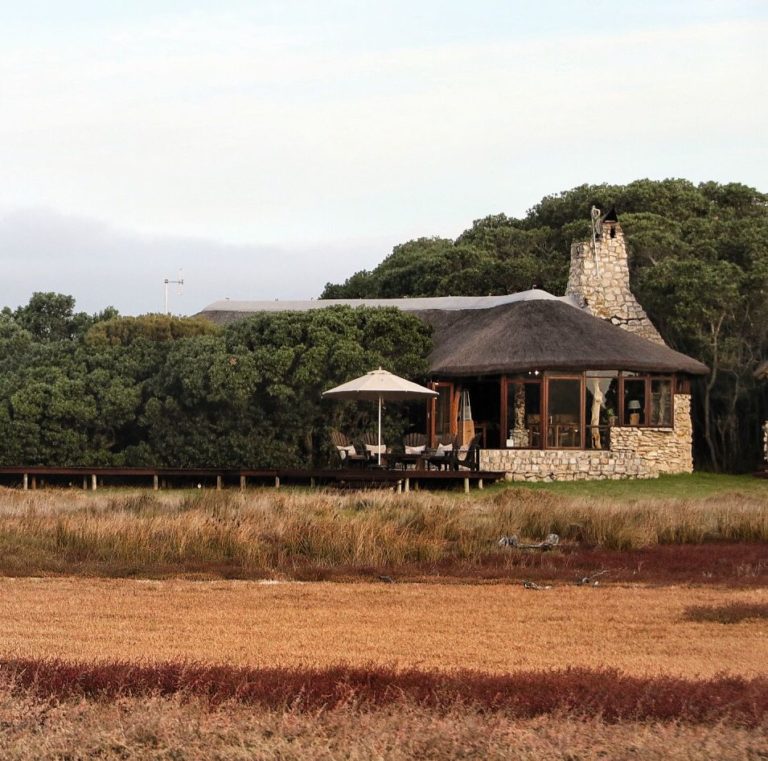
Mosaic and the 400 hectares it includes is now run by Maryke de Villiers, for years the lodge’s accountant. It began life as the dream of conservationists Breese and Kathryn Johnson and was once a tented camp for multi-day hikers trekking through the estuary region. It has since evolved into the limestone, wood, glass and thatch retreat it is today, but the essence of that original, ecologically sensitive approach remains. It has the feel of the best Zimbabwean stone and thatch lodges of yore, sweet-smelling grass ceilings, polished concrete, the careful synthesis of inside and outside. De Villiers is keen on retaining the estuary’s ‘light footprint’ ethos, which means there are only four suites, a strong emphasis on recycling and alternative energy sources.
That said, there’s a level of luxury expected of a five-star lodge. Design is cutting edge and cottages feature king-size, colonial, four-poster mosquito netted beds, above ceiling fans. The cuisine sets high standards too; it reflects international fusion trends even as it makes use of only local ingredients. And the full-service spa chooses its products for their organic originality as much as restorative powers. So too with the activities available, which include guided walks through the property, trips to Walker Bay Nature Reserve, sundowners on the river or the beach and excursions into Hermanus and Gansbaai.
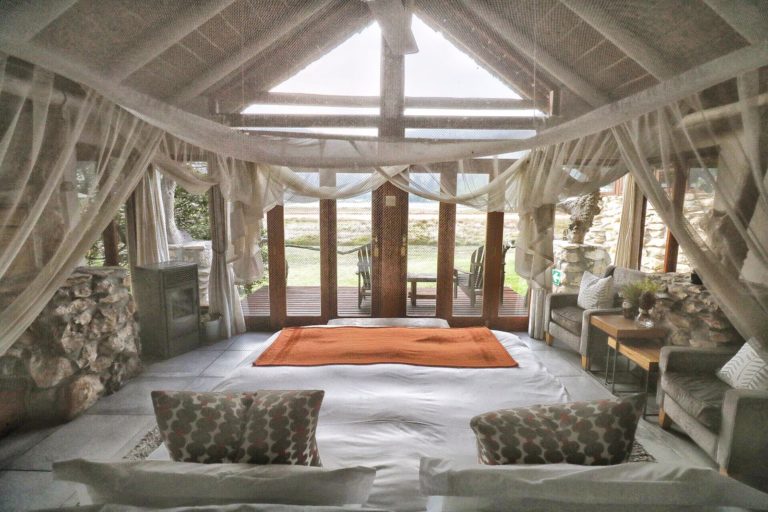
A weekend is hardly enough but it does the job, restores a degree of balance. It’s difficult to believe the bustling tourist centres of Hermanus and Stanford are so close by – Mosaic feels nothing so much as entirely remote, a hidden world among the sprites and forest nymphs. Milkwood magic.
For more information visit mosaiclagoonlodge.co.za
Follow them on Facebook and Instagram
ALSO READ: Trippin’ in Hogsback
Follow us on social media for more travel news, inspiration, and guides. You can also tag us to be featured.
TikTok | Instagram | Facebook | Twitter









